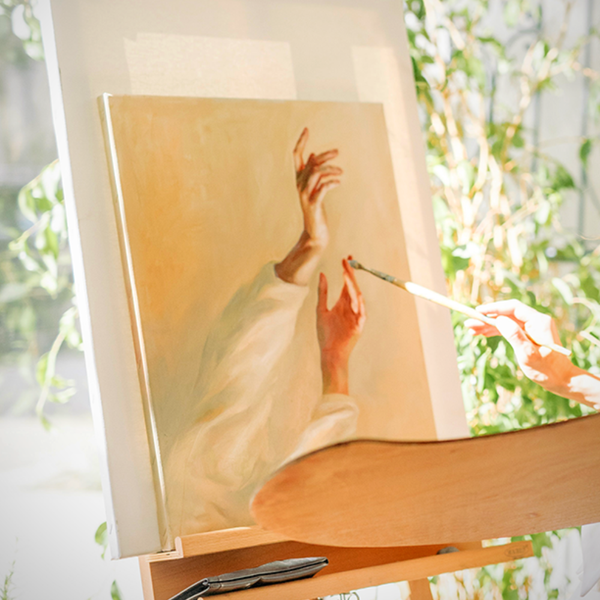Embarking on your painting journey is like opening a door to a world brimming with colors, creativity, and endless possibilities.
While the excitement is palpable, the sheer number of options can feel overwhelming. Fear not!
This comprehensive guide is designed to help you navigate the art world with ease, offering practical advice on what to start painting as a beginner, the best mediums to use, such as acrylic paint for its affordability and versatility, and essential tips to enhance your painting skills.
A finished painting is the culmination of your creative process, starting from a rough sketch and evolving into a refined masterpiece.
Get ready to unleash your inner artist and make your first brushstrokes truly memorable!
Key Takeaways:
- Start Simple: Begin with basic subjects like still life or landscapes to build your confidence and skills.
- Choose the Right Medium: Acrylic paints are ideal for beginners due to their versatility and quick drying time.
- Invest in Quality Supplies: Good quality brushes, paints, and canvases can make a significant difference in your painting journey.


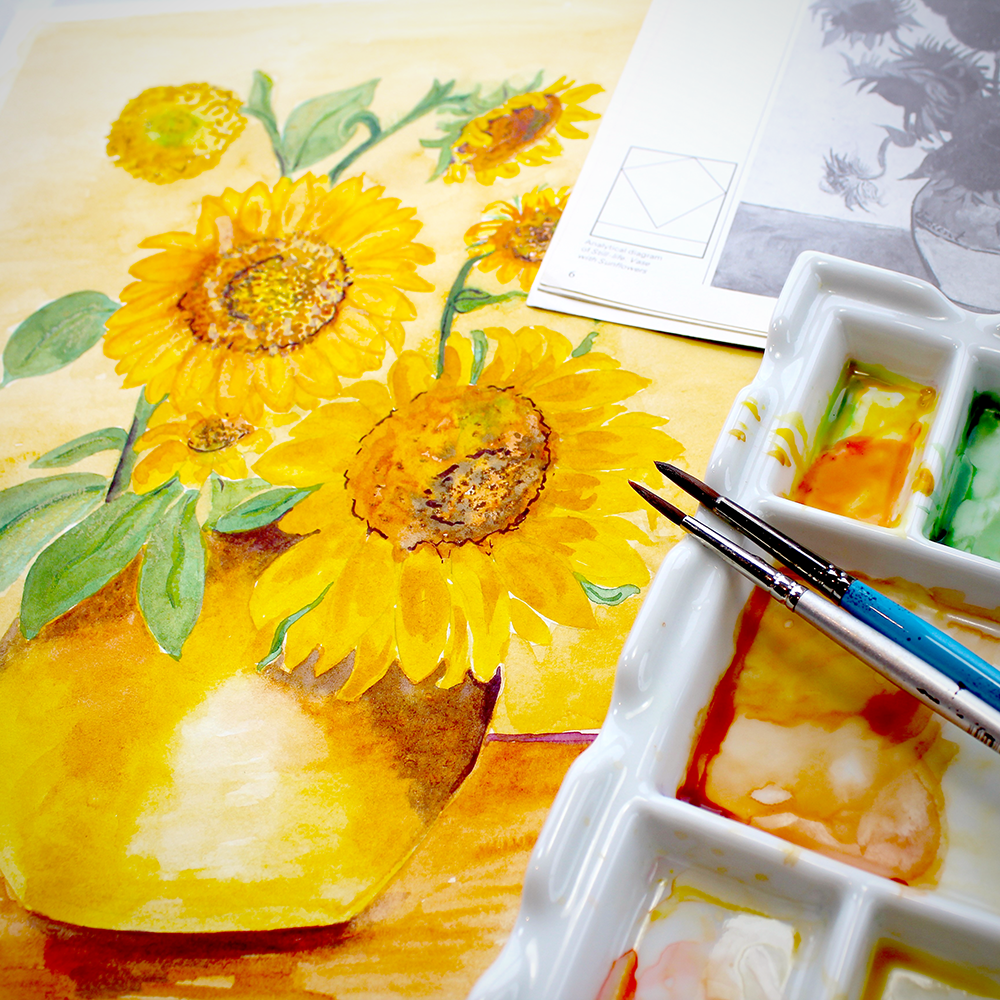
Choosing Your Medium: Acrylic Paints
Acrylic paints are a fantastic choice for beginner artists due to their affordability and availability.
Their forgiving nature allows for easy corrections, and they dry quickly, enabling you to layer colors without long waiting periods.
Acrylics can be used on various surfaces, including canvas, paper, and wood, making them versatile for different projects.
When starting with acrylic painting, invest in a few basic supplies such as student-grade paints, synthetic bristle brushes, and a palette.
These will provide a good starting point without breaking the bank.
As you progress, you can experiment with acrylic mediums to achieve different textures and effects.
Exploring Oil Paints
Oil paints are another popular choice, known for their rich colors, slow drying time, and workability, which allows for detailed blending and layering.
This medium allows for more detail and blending, making it ideal for portrait painting and other intricate works.
Oil painting is characterized by its buttery consistency, suitability for blending colors, and the need for proper preparation and ventilation due to the use of traditional solvents and mediums.
However, oil paints require more preparation and cleanup, which can be daunting for beginners.
If you want to paint with oils, consider starting with water mixable oils.
These offer the same benefits as traditional oil paints but can be thinned and cleaned with water, reducing the need for harsh solvents.
Begin with a limited palette of primary colors, titanium white, and ivory black to practice color mixing and gain confidence in your painting skills.
The Appeal of Watercolor Paintings
Watercolor paintings are known for their light wash and delicate appearance.
This medium is perfect for capturing the beauty of individual flowers, landscapes, and still life.
Watercolors are portable and require minimal supplies, making them ideal for painting on the go.
To get started with watercolor, purchase a set of student-grade paints, a few brushes, and watercolor paper.
Practice creating different washes and blending colors to understand how the paint behaves.
Watercolors can be challenging due to their transparency and quick drying time, but with practice, you'll learn to control the medium and create stunning works of art.



Building Your Art Supplies Collection
Investing in quality art supplies can make a significant difference in your painting experience.
Start with the basics, such as a set of student-grade paints, a variety of paint brushes, and a few canvases.
As you progress, you can expand your collection with different mediums, palette knives, and specialty brushes.
Visit craft stores like Hobby Lobby to find a wide range of art supplies.
Look for sales and discounts to build your collection without breaking the bank.
Remember, the right tools can enhance your skills and make the painting process more enjoyable.
Experimenting with Different Brushes
Different paint brushes can create a variety of effects in your paintings.
Experimenting with different shapes, sizes, and bristle types can help you find the right tools for your style.
Beginners can get started painting with palette knives, which are appealing for their ability to create unique textures and effects.
Synthetic bristle brushes are a good starting point for beginners due to their versatility and durability.
Try using different brushes for various painting techniques, such as fine details, broad strokes, and texture.
Palette knives can also be used to create interesting effects and add depth to your work.
Experimenting with different tools will help you discover new techniques and enhance your painting skills.
Creating Texture and Depth
Adding texture and depth to your paintings can make them more engaging and dynamic.
Experiment with different techniques, such as layering, dry brushing, and using palette knives, to create interesting effects.
Acrylic mediums can also be used to add texture and enhance the overall look of your work.
Start by building up layers of paint to create depth. Use different brushes and techniques to add texture and interest.
Experiment with acrylic mediums, such as gels and pastes, to achieve different effects.
Creating texture and depth will add dimension to your paintings and make them more visually appealing.
Understanding Color Theory
Color theory is essential for creating harmonious and visually appealing paintings.
Understanding the color wheel and how different colors interact can help you make informed choices in your work.
Practice mixing colors to create a wide range of hues and shades.
Start with a limited palette of primary colors, titanium white, and ivory black.
Experiment with mixing different combinations to see how they interact.
Use a color wheel to guide your choices and create balanced compositions.
Understanding color theory will enhance your ability to create dynamic and engaging paintings.
Using a Limited Palette
Using a limited palette can help you focus on color mixing and create harmonious compositions.
Start with a few basic colors, such as ultramarine blue, burnt sienna, and yellow ochre, and practice mixing different shades and hues.
A limited palette can simplify the painting process and help you develop a better understanding of color relationships.
Experiment with different combinations to see how they interact and create a cohesive look.
Using a limited palette will enhance your color mixing skills and improve the overall quality of your work.



Starting with Still Life
Still life painting is an excellent way for beginner artists to develop their skills.
By focusing on inanimate objects, you can practice composition, lighting, and color mixing without the pressure of capturing movement or expression.
Common subjects for still life include fruit, flowers, and everyday objects.
Set up a simple still life arrangement with a few items and a light source.
Use a reference photo if needed to help with proportions and details.
Experiment with different brushes and techniques to create texture and depth in your painting.
As you gain confidence, you can tackle more complex compositions and add your unique style.
Landscapes: Capturing Nature's Beauty
Landscapes are a popular subject for beginner painters, offering endless inspiration from the natural world.
Whether you prefer painting mountains, forests, or seascapes, landscapes allow you to practice various techniques such as color mixing, brush strokes, and perspective.
Start with a reference photo or paint en plein air (outdoors) to capture the scene directly.
Use a limited palette to simplify color choices and focus on the overall composition.
Experiment with different mediums, such as acrylics or oils, to find what works best for you.
Remember, the goal is to enjoy the process and learn from each painting.
Portrait Painting: Capturing the Human Form
Portrait painting can be challenging but rewarding for beginner artists.
Capturing the likeness and expression of a person requires a keen eye for detail and practice.
Start with simple portraits, focusing on the basic shapes and proportions of the face.
Use a reference photo to guide your painting and break down the features into manageable sections.
Practice mixing skin tones using a limited palette of primary colors, burnt sienna, and yellow ochre.
As you become more comfortable, experiment with different brushes and techniques to add texture and depth to your portraits.
Abstract Art: Embracing Creativity
Abstract art allows for complete creative freedom, making it an excellent choice for beginners.
This style focuses on shapes, colors, and textures rather than realistic representations, enabling you to express your emotions and ideas without constraints.
Start with a blank canvas and let your imagination guide you.
Use different brushes, palette knives, and acrylic mediums to create interesting textures and effects.
Experiment with color mixing and layering to achieve the desired look.
Abstract art is about self-expression, so don't be afraid to take risks and explore new techniques.
Pop Art: Bold and Vibrant
Pop art is a fun and accessible style for beginner painters.
Characterized by bold colors, simple shapes, and iconic imagery, pop art allows you to create eye-catching pieces with a modern twist.
This style is perfect for experimenting with different mediums and techniques.
Choose a subject that resonates with you, such as a famous person, object, or scene.
Use bright, contrasting colors and clean lines to create a striking composition.
Experiment with acrylic paints and different brushes to achieve the desired effect.
Pop art is all about making a statement, so have fun and let your creativity shine.
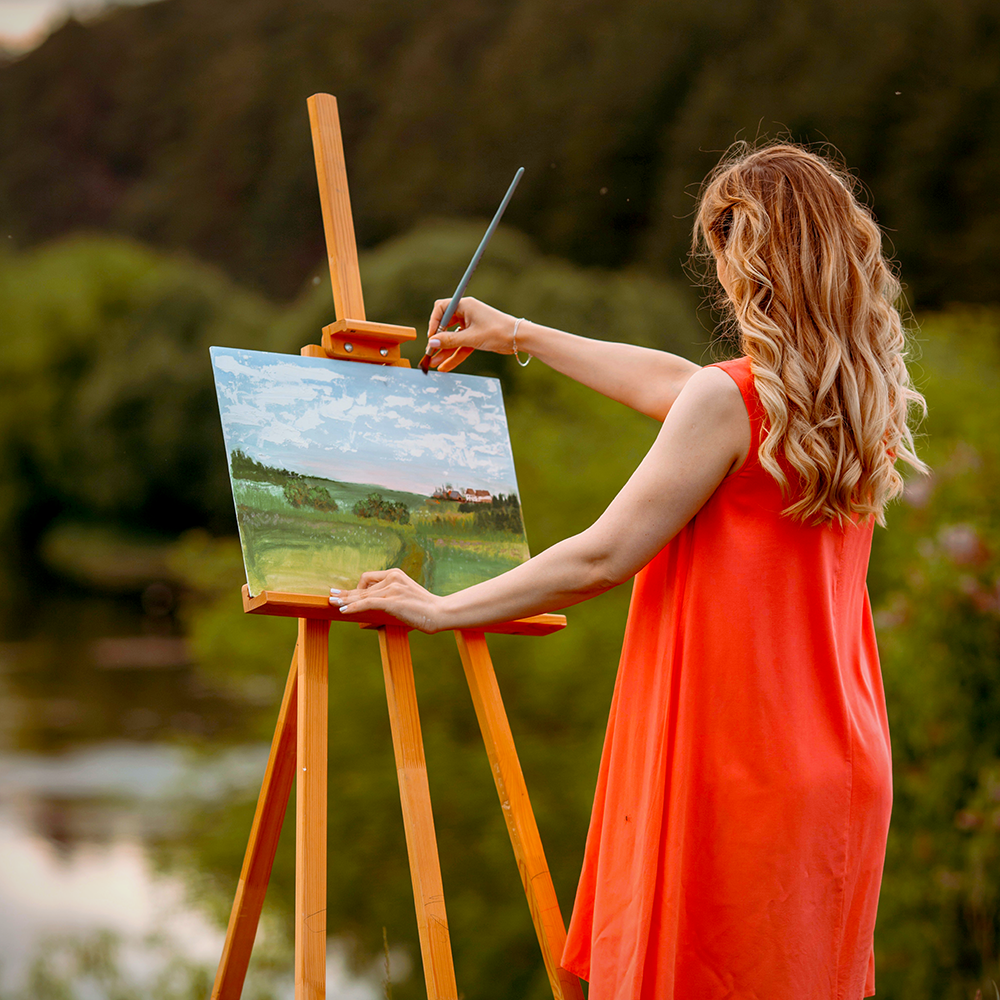


Finding Inspiration: Visit Galleries and Museums
Visiting galleries and museums is a great way to find inspiration and learn from other artists.
Observing different styles, techniques, and subjects can spark new ideas and help you develop your unique style.
Take note of what resonates with you and try to incorporate those elements into your work.
Many galleries and museums offer workshops and classes for aspiring artists.
These can provide valuable hands-on experience and guidance from professional artists.
Don't be afraid to ask questions and seek feedback on your work.
Learning from others is an essential part of your painting journey.
Practicing Drawing Skills
Strong drawing skills are the foundation of any great painting.
Practice sketching regularly to improve your understanding of shapes, proportions, and perspective.
Use a sketchbook to experiment with different techniques and subjects.
Start with simple exercises, such as drawing basic shapes and still life objects.
Gradually move on to more complex subjects, such as portraits and landscapes.
Drawing from life and using reference photos can help you develop a keen eye for detail and improve your overall painting skills.
Painting on a Small Scale
Starting with small-scale paintings can help you build confidence and develop your skills without feeling overwhelmed.
Small canvases or paper allow you to complete a painting in a shorter amount of time, providing a sense of accomplishment and motivation to continue.
Choose simple subjects and focus on capturing the essential elements.
Experiment with different techniques and mediums to see what works best for you.
Painting on a small scale can help you refine your skills and prepare for larger, more complex projects.
Learning from Other Artists
Observing and learning from other artists can provide valuable insights and inspiration.
Follow professional artists on social media, watch tutorials, and read books to learn new techniques and approaches.
Engaging with the art community can help you grow as an artist and stay motivated.
Join local art groups or online communities to connect with other aspiring artists.
Share your work, seek feedback, and participate in challenges to improve your skills.
Learning from others is an essential part of your painting journey and can help you develop your unique style.
Setting Realistic Goals
Setting realistic goals can help you stay focused and motivated on your painting journey.
Start with small, achievable objectives, such as completing one painting per week or mastering a specific technique.
Gradually increase the complexity of your goals as you gain confidence and skills.
Track your progress and celebrate your achievements along the way.
Setting realistic goals will help you stay motivated and ensure steady improvement in your painting skills.
Painting Tips for Beginners
Starting your painting journey can be thrilling yet overwhelming.
But don't worry, we've got you covered with these essential painting tips to help you unleash your creativity and develop your unique style.
- Choose the Right Supplies: Investing in quality materials can make a world of difference. Start with a basic set of brushes, a palette, and a few tubes of primary colors. As you progress, you can expand your collection.
- Understand Color Theory: Learn the basics of color mixing and how colors interact with each other. This knowledge will help you create harmonious and dynamic compositions.
- Practice Drawing Skills: Strong drawing skills are the foundation of good painting. Spend time sketching and practicing your drawing techniques to improve your overall artistic ability.
- Experiment with Different Mediums: Try out various painting mediums like acrylics, watercolors, and oils to find the one that suits your style and preferences. Each medium has its unique characteristics and techniques.
- Start with Simple Subjects: Begin with easy subjects like still life, landscapes, or simple shapes. As you gain confidence, you can move on to more complex compositions.
- Use References: Working from photos or real-life references can help you understand proportions, lighting, and details. Don't be afraid to use references to guide your work.
- Embrace Mistakes: Mistakes are a natural part of the learning process. Instead of getting discouraged, use them as opportunities to learn and grow as an artist.
- Develop a Routine: Consistency is key to improvement. Set aside regular time for painting, even if it's just a few minutes each day. This will help you build momentum and develop your skills.
- Seek Feedback: Share your work with others and seek constructive feedback. Join online forums, local art groups, or take classes to connect with fellow artists and learn from their experiences.
- Enjoy the Process: Remember that painting is a journey, not a destination. Enjoy the creative process, experiment with new techniques, and let your imagination run wild. The more you paint, the more you'll discover about yourself and your artistic potential.



Embrace the Canvas of Possibilities
Starting your painting journey as a beginner can be both exciting and challenging.
As you embark on your painting journey, remember that every stroke is a step towards discovering your artistic voice.
By selecting the right medium, honing your skills, and drawing inspiration from the masters, you lay the groundwork for a vibrant and fulfilling creative adventure.
Embrace the joy of the process, celebrate your progress, and let your imagination soar.
Happy painting!



Painting FAQs
Are you ready to dive into the colorful world of painting but have a few questions holding you back?
You're in the right place!
This FAQ section is designed to answer all your burning questions, whether you're a complete beginner or looking to refine your skills.
From choosing the best medium to improving your techniques and selecting the perfect subjects to start with, we've got you covered.
Let's get those creative juices flowing and turn your artistic dreams into reality!
What is the best medium for beginner painters?
Acrylic paints are ideal for beginners due to their versatility, quick drying time, and forgiving nature. They can be used on various surfaces and are easy to clean up, making them a great choice for those just starting.
How can I improve my painting skills?
Practice regularly, experiment with different techniques and mediums, and seek inspiration from other artists. Joining art groups or taking classes can also provide valuable guidance and feedback to help you improve.
What subjects should I start painting as a beginner?
Begin with simple subjects like still life, landscapes, and abstract art. These subjects allow you to practice essential skills such as composition, color mixing, and brush techniques without feeling overwhelmed. As you gain confidence, you can explore more complex subjects like portraits and detailed scenes.
What tools and supplies do I need to start painting?
To start painting, you'll need a basic set of supplies including paints (acrylics are great for beginners), brushes of various sizes, a palette for mixing colors, canvas or paper, and an easel. Don't forget a cup of water for cleaning brushes and some rags or paper towels for wiping them.
How do I choose the right brushes?
Brushes come in various shapes and sizes, each serving a different purpose. For beginners, a good starter set includes flat brushes for broad strokes, round brushes for detail work, and filbert brushes for blending. Synthetic brushes are generally more affordable and versatile for acrylic paints.
What is the importance of priming a canvas?
Priming a canvas with gesso prepares the surface for painting by creating a smooth, even texture that helps the paint adhere better. It also prevents the paint from soaking into the canvas, ensuring vibrant colors and a longer-lasting artwork.
How do I mix colors effectively?
Start with the primary colors (red, blue, and yellow) and experiment with mixing them to create secondary colors (green, orange, and purple). Use a palette knife or brush to blend small amounts of paint until you achieve the desired hue. Remember, a little goes a long way!
What are some common painting techniques for beginners?
Some basic techniques to try include dry brushing for texture, glazing for transparency, stippling for a dotted effect, and blending for smooth transitions between colors. Experimenting with these techniques will help you discover your unique style.
How do I fix mistakes in my painting?
One of the great things about acrylic paints is their forgiving nature. If you make a mistake, let the paint dry and simply paint over it. You can also use a damp cloth to wipe away wet paint or a palette knife to scrape off dried paint.
How do I know when my painting is finished?
Knowing when a painting is finished can be challenging. Step back and view your work from a distance to see if it feels balanced and complete. Trust your instincts and remember that sometimes less is more. If you're unsure, take a break and revisit your painting with fresh eyes.
Can I paint over an old canvas?
Yes, you can paint over an old canvas. Simply apply a layer of gesso to cover the previous painting and create a fresh surface. This is a great way to recycle canvases and experiment without the pressure of starting from scratch.
How do I care for my finished paintings?
To protect your finished paintings, consider applying a varnish to seal and preserve the colors. Store your paintings in a cool, dry place away from direct sunlight to prevent fading. If framing, use acid-free materials to avoid damage over time.
What are some good resources for learning more about painting?
There are many resources available for aspiring painters, including online tutorials, books, and workshops. Websites like YouTube, Skillshare, and Udemy offer a wealth of instructional videos. Local art stores and community centers often host classes and events where you can learn from experienced artists.
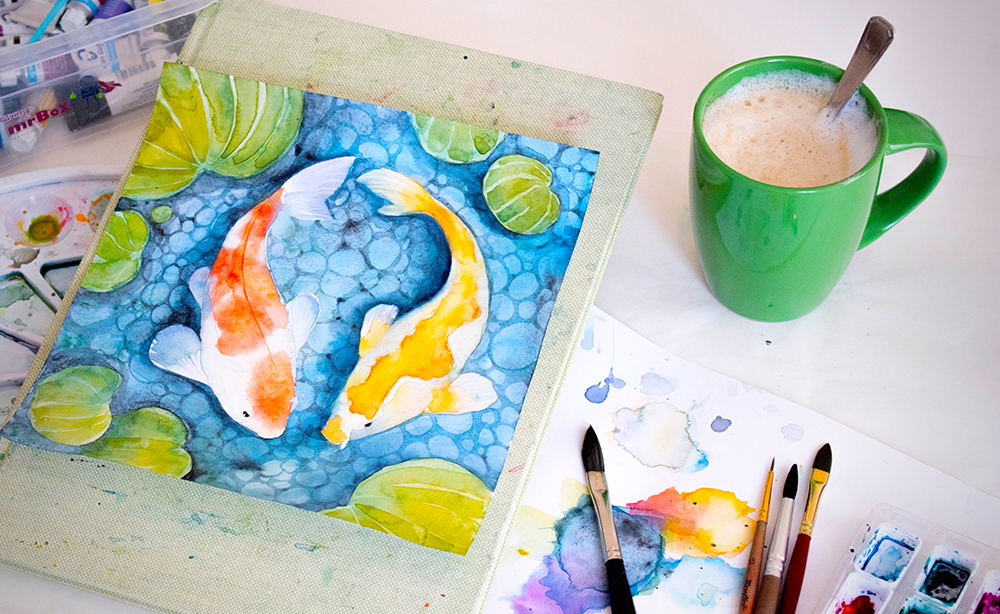

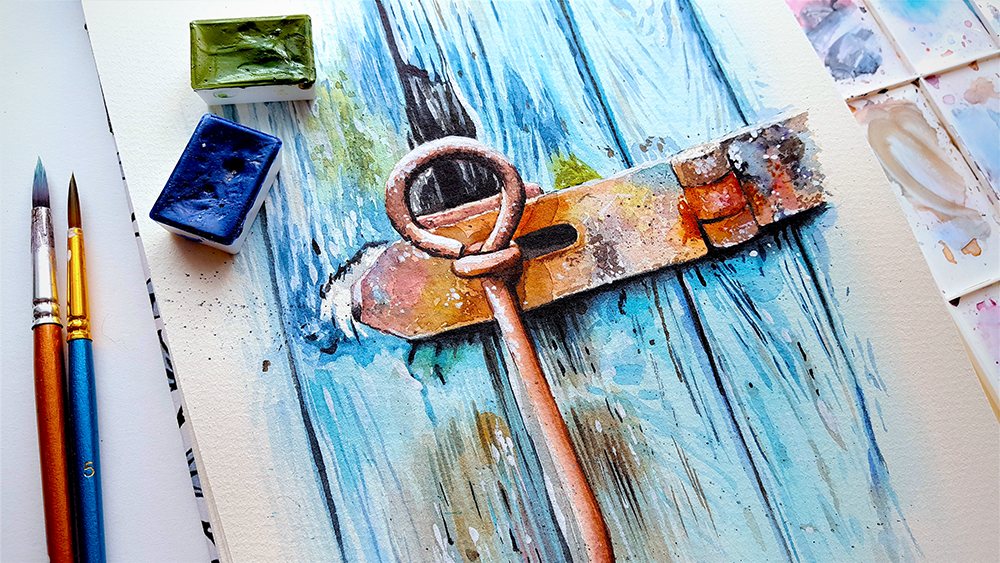
Interested in starting painting? Check out Josh Art's video!
Want even more content about creativity and art?
Be sure to check out all of our creative chronicles!
Ready to dive into the world of painting?
Check out our other painting articles:
-What is the easiest thing to paint?
-What are the 7 rules of painting?
-How long does it take to get good at painting?
-Can I learn to paint by myself?
-How to start painting as a hobby










